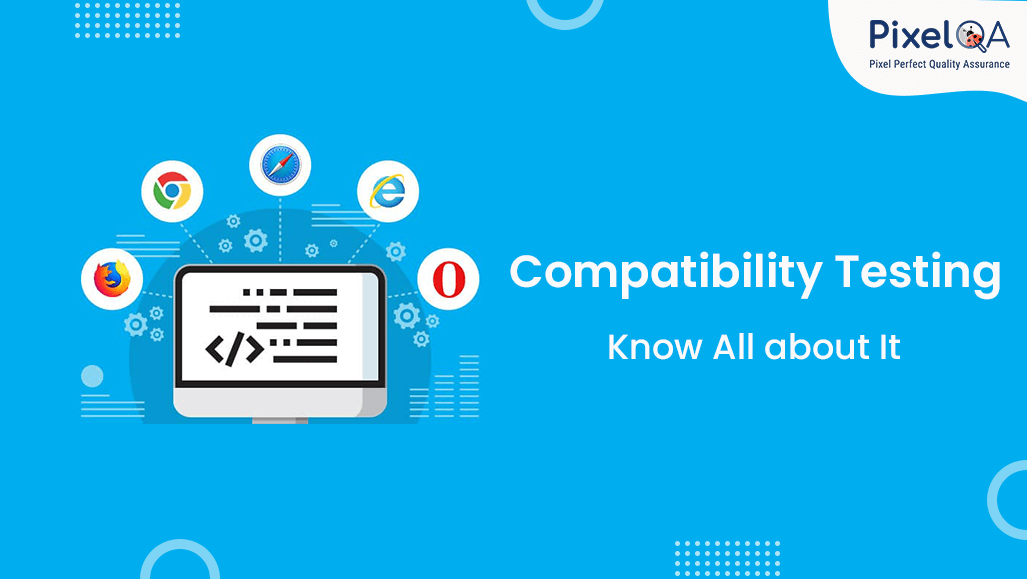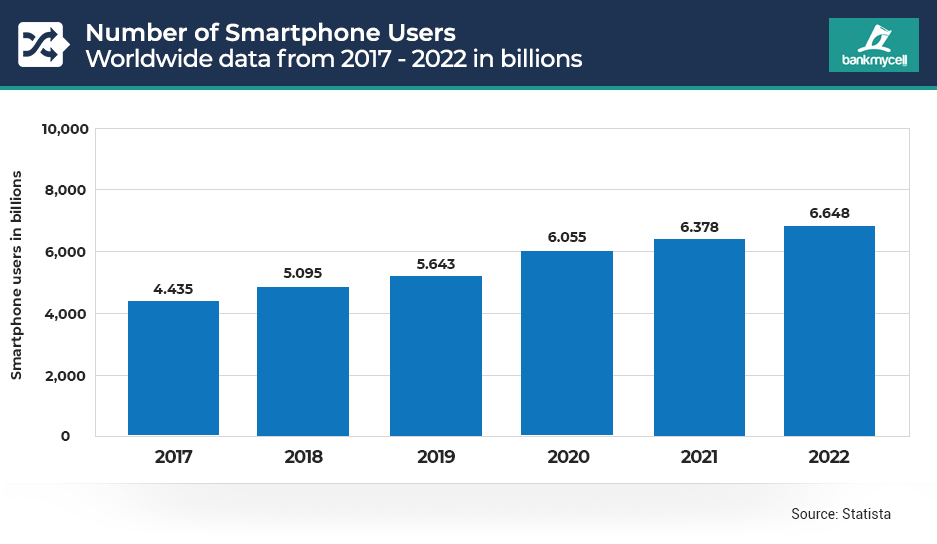
Let's face it - your phone has become your lifeline. Remember 2016? Back then, only about half the planet owned smartphones. Fast forward to today, and we're looking at 6.6 billion users - that's 4 out of 5 people globally glued to their screens. This isn't just growth; it's a complete transformation of how the world interacts with technology.

But here's the catch nobody talks about: while smartphone adoption skyrocketed, the tech landscape became a compatibility nightmare. We've got:
- 24,000+ distinct Android device configurations
- 50+ iOS versions still in active use
- Screen sizes ranging from 4" to 7"+
- Hardware capabilities varying wildly
This fragmentation means your app might run perfectly in your development environment but crash spectacularly for millions of actual users. That "works on my machine" excuse? It could cost you 40% of your potential user base.
Compatibility testing has evolved from QA afterthought to business imperative. It's no longer about checking boxes - it's about ensuring your digital product doesn't alienate chunks of your audience because of their device choice. In today's market, consistent performance across platforms isn't just good engineering - it's basic respect for your users.
Table of Contents
- Why Perform Compatibility Testing
- Types of Compatibility Testing
- Hardware Compatibility Testing
- Network Compatibility Testing
- Operating System Compatibility Testing
- Device Compatibility Testing
- Mobile Compatibility Testing
- Browser Compatibility Testing
- Software Compatibility Testing
- Version Compatibility Testing
- Challenges in Compatibility Testing
- Compatibility Testing Tools
- Conclusion
Why Perform Compatibility Testing
Here are some major reasons why conducting thorough compatibility testing is essential:
- Compatibility testing rigorously checks your app across thousands of device/OS combinations - from legacy smartphones to cutting-edge tablets - ensuring flawless performance no matter what hardware your customers use.
- It simulates actual usage conditions including different network speeds, browser versions, and database configurations to catch bugs that only appear in specific setups.
- This process identifies compatibility-related crashes, UI glitches, and performance bottlenecks before launch, saving costly post-release fixes.
- Verifies your security features function correctly across all platforms, preventing vulnerabilities that might only exist in certain device/OS combinations.
- By delivering consistently smooth experiences across all user environments, you avoid negative reviews and build trust in your brand's technical reliability.
Types of Compatibility Testing
There are several types of compatibility testing, each serving a specific purpose. Here is a quick breakdown.
Hardware Compatibility Testing
When we test hardware compatibility, we're essentially playing matchmaker between your software and the countless hardware configurations in the wild. It's not just about checking if your application runs it's about verifying optimal performance whether someone's using an entry-level laptop or a high-end workstation. We put graphics cards, CPUs, peripherals, and storage drives through their paces to catch those frustrating glitches that only surface when specific hardware interacts with your software. This thorough vetting process prevents crashes, performance bottlenecks, and other issues that could derail the user experience.
Network Compatibility Testing
Network testing throws your application into the connectivity jungle to see how it survives. We simulate everything from spotty coffee shop Wi-Fi to lightning-fast 5G connections because let's face it your users aren't all working from perfect office networks. By monitoring how your software handles different bandwidths, latency issues, and connection drops, we identify security vulnerabilities and performance gaps that could frustrate users or expose sensitive data. The goal? An application that delivers consistent performance whether someone's on a train using 4G or in a basement with patchy reception.
Operating System Compatibility Testing
This type evaluates the behavior of software applications across different operating systems and their versions. It ensures that applications and websites function seamlessly across diverse OS environments. For instance, mobile apps undergo testing on both iOS and Android platforms to confirm compatibility. Test outcomes assist in addressing compatibility challenges and suggesting suitable OS versions.
Device Compatibility Testing
This type of testing checks whether software runs properly across different devices—including smartphones, tablets, desktops, and laptops. It ensures all hardware features like cameras, sensors, and touchscreens work as expected, providing a consistent user experience no matter what device someone uses.
Mobile Compatibility Testing
This process concentrates solely on mobile devices, assuring the proper operation of software applications and websites on smartphones, tablets, and similar handheld gadgets. Selection of devices for testing can be guided by market statistics to encompass representative devices.
Browser Compatibility Testing
This category assesses the functionality of websites and web applications on different web browsers. The aim is to secure consistent presentation and operation across browsers like Chrome, Firefox, Safari, and Edge. Testing involves elements like JavaScript, HTML, and CSS, enabling flawless performance across multiple browser choices.
Software Compatibility Testing
Software compatibility testing evaluates how software interacts with other software or third-party tools. Its focus lies in guaranteeing seamless communication and operation, such as the successful opening of a PDF file in Adobe Acrobat or the proper functioning of an exportable grid view in Microsoft Excel.
Version Compatibility Testing
This type confirms the continued compatibility of software applications with various versions of web browsers and operating systems. It ensures that modifications or updates to software do not result in compatibility issues with older versions or their components. Here, two subcategories exist:
- Backward compatibility testing process verifies whether updated software versions remain fully functional when used with older systems and hardware components. It's a critical step for organizations to confirm that system upgrades won't disrupt their current operational environment or legacy technology stack.
- Forward compatibility testing validation process ensures today's software will continue working seamlessly with upcoming releases. By identifying potential issues in advance, it prevents compatibility roadblocks when users transition to future versions of the platform or operating system.
Challenges in Compatibility Testing
Compatibility testing uncovers a specific class of bugs that rear their heads on one platform while leaving others untouched. These are referred to as compatibility bugs, often surfacing as UI (user interface) glitches.
Users often encounter various display problems when software runs across different environments. These may include inconsistent fonts, misaligned elements, color variations, style sheet conflicts, scroll bar issues, overlapping content, or layout distortions. Similar to how applications behave differently across devices and browsers, these visual glitches can significantly impact how users interact with the software.
Resolving these issues comes with considerable obstacles. The sheer variety of devices, operating systems, and browser versions creates an enormous testing matrix. Quality teams must account for countless possible configurations, making comprehensive testing extremely resource-intensive. Additionally, with constant updates to platforms and browsers, organizations must perform regular compatibility checks to maintain consistent performance across all environments.
Nevertheless, conducting comprehensive compatibility testing demands both time and resources, which may introduce challenges concerning budget allocations and scheduling constraints for businesses. Achieving the right equilibrium becomes pivotal to guaranteeing seamless functionality of your software across various devices and systems, without depleting your resources excessively.
Compatibility Testing Tools
There are several compatibility testing tools available to streamline the testing process. Virtual desktops are one such tool that aids in OS compatibility testing. Testers can use virtual machines (VMs) to run the application in different operating systems, comparing results across multiple systems to ensure optimal performance.
Additionally, a number of browser compatibility tools have been developed, offering valuable assistance in this area. Some of these tools include:
- BrowserStack
- LambdaTest
- CrossBrowserTesting
- BrowseEmAll
- TestingBot
- Browserling
- MultiBrowser
- BrowserSandbox
- Experitest
- Functionize
- Browsershots
Each of these tools serves to simplify the process of testing the software application on various browsers, ensuring it works seamlessly across different browser platforms.
Conclusion
Compatibility testing is a vital element for any software development company. It directly affects how your users experience your product, how many customers you can reach, and your reputation in the marketplace. Spending time and resources on thorough compatibility testing pays off by leading to happy users, growing revenue, and an edge against your competitors. Make it a priority, do it right, and set your product up for wider adoption and growth.
When it comes to selecting a good partner for Software Testing Services, Pixel QA is the best option. With our skilled team of testing experts, advanced testing methods, and extensive collection of testing devices and environments, Pixel QA guarantees that your software runs smoothly on all platforms. We are aware of the complexities of compatibility testing and offer customized solutions based on your needs.

